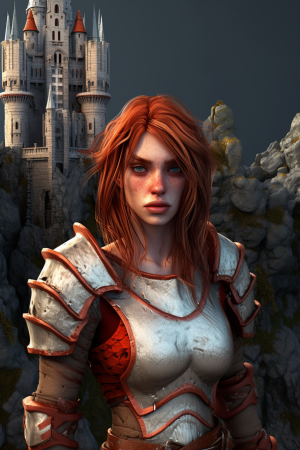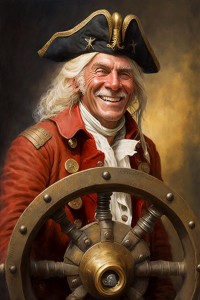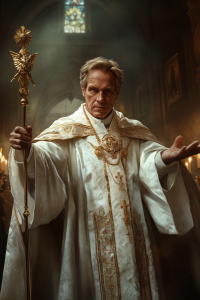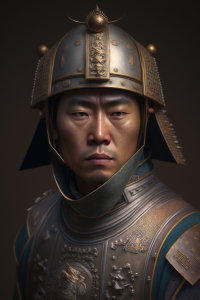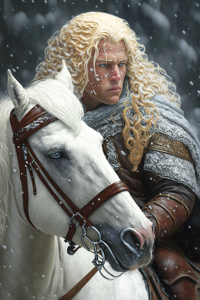Human
| Race | Human |
|---|---|
| Subraces | 7 Subraces |
| Patron Deity | Woden and various others |
| Diet | Omnivorous |
| Lifespan | Usually up to 75 years, max 120 years |
| Location | Any |
| Language | Otani |
| Climate | Any |
| Terrain | Any |
| Height | 4'6" – 7'0" ( 137 – 213cm) |
| Weight | 80–300 lb (40–150 kg) |
| Skin Color | Variable, from White (rare) to Black (also rare) |
| Hair Color | White, Blonde, Brown, Red, Auburn, Black and Bald |
| Eye Color | Amber, Hazel, Blue, Green, Gray, Brown, and Red (rare) |
| Distinctions | Gregarious, noisy. |
| 5e Equivalence | Human |
| 5e Alignment | Any |
Humans are a bipedal race who like to shitpost on the Internet.
Racial Variants
There are seven cultural variants of humans. These variants are not divided by even lines and individuals may vary greatly within each group. Besides sharing a common culture and geographical base, these groups may also share common political ideologies, a religions, and in many cases physical traits.
Araldikar
These islander people hail from the island nation of Araldar on the western edge of Otan. They are often easily identified by their western dialect of the Otani, their wind-beaten bronze complexions and dark features. The Araldikar are naturally enamored with all things maritime and in particular the fruits of the sea.
The Araldikar are often considered to be bilingual as they can nearly universally speak the Otani language but also the Araldar pidgin, which is a hybrid mixture of the Otani, Sweardaelf and Aelfish languages. Araldar pidgin is spoken almost exclusively on the smaller Araldar languages.
Mujitism is the most common religion shared by the Araldikar people. This sea-oriented religion is comprised of legends of a nautical nature with the heroes engaging with, or even becoming sea creatures. The morals of this religion affect Araldar culture giving lessons that involve respect for the sea and the creatures within.
The sea is the central source of food for the Araldikar and naturally the people are therefore inclined to have deep understandings of what is to be at sea. From an early age, the Araldikar will acquire nautical skills such as fishing, sailing and swimming among others. Araldikar trades can include farming and other more traditional inland occupations, but more than half the population live adjacent to or on the sea at any given time. The highest paying occupations will typically involve a life at sea.
Batistikar
The natives of western Otan known as the Batistikar, mainly inhabiting the country known as the Republic of Batis. Formerly a very withdrawn people, it came to the world's attention that the Batistikar were exceptional farmers. It is said that,
"For every handful of grain that Batistikars sew, they yield seven more."
The Batistikar are also very talented with animal husbandry, raising bison, and other animals with high yields of meat. While they only harvest what they need, in recent years they have begun trading with neighboring Soltustik, which needed supplies during the Grendel War. Their contribution during the war led to widespread knowledge of their agricultural prowess. It was not long before the Kuulik Trade Company had established shipping routes to every major coastal city in the Republic of Batis.
At the present time, Batistiktar produced foodstuffs are shipped worldwide via the coastal routes and to Soltustik and Aelfgarade via land routes. The country's increased reliance on trade, for which they import everything from metal to magic, has caused them to sew and harvest many times what the country itself would consume.
The Batistikar will sporadically practice Wodenism as a religion, but tend to prefer their own animistic religions with gods representing each of the major species of wildlife in Batis. This religion is passed through the oral tradition, and though it lacks the bookishness of other religions, it is rich in religious art. Symbols for the wolf, raven or orca can be recognized immediately by any Batistikar and these symbols will often adorn their homes and holy places.
The people themselves can be typically distinguished by their darker features; tanned skin, brown eyes and black hair, often worn long by both males and females. As adventurers, the Batistikar produce an unsurprisingly high number of rangers, druids and rogues due to their close connection with the natural world. This is a generalization, of course, as is possible for a Batistikar to be produced of any skin/eye/hair color possible for a human with a calling to any of the adventurer archetypes.
Ontustiker
These southern people of Ontustik are generally recognizable by their olive complexions, brown eyes and thick black hair. Their most common feature, however, is not physical. They are noted for their devotion to Aspan, the god of the sky and other deities of the Aspanist religion. In this regard, few Ontustikers would be found without clothing and/or symbols that are deferential to these gods and their religion.
Ortalykshilar
These central plains people are a melting pot, of most of the people of Otan. The Ortalykshilar come in every size, shape, hair colour and skin tones ranging from snow white to ebony black. While there is no one type of Ortalykshilar the majority are fair skinned, with square jaws and hair ranging from red to brown.
Due to their central location, The Ortalykshilar are far more likely than other humans on Otan to have business and personal relationships with other humanoids including, but not limited to Ælfes, Dweorges, Aydahar and even their former enemies, the Grendel. It is not unusual to find Kuulik Trade Company representatives facilitating trade in Ortalyk's major cities and this all ties into the center of the universe culture that the Ortalykshilar have created.
The Ortalykshilar have a culture that is particularly respectful to Woden, Wodenism and the gods within that pantheon. The capitol of Kala Astanals is the holy city of that religion and through the Ortalykshilar, take the message of Woden to every nation in Otan.
While every Ortalykshilar is likely to speak the common Otani language, it is not unusual for an Ortalykshilar to speak one of any of the other languages of their trading partners.
Sigis Turgindar
These eastern people of Otan are extremely wrapped in their many traditions. Few things in the society of the Sigis Turgindar take place without the ceremony and accoutrements of centuries past. The Sigis Turgindar are incredibly respectful of their ancestors, who they believe continuously evaluate their lives from the afterlife.
These eastern people practically worship quality craftsmanship, creating some of the best trade goods the world has to offer. This has resulted in some extensive trade routes, which extend from their home country of Sigis around the world.
The features of the Sigis Turgindar can vary greatly with a range of skin tones, though their hair color is consistently darkish brown to black. In rare cases they might have green, hazel or even yellowish eyes.
Karazaliktar
These southern people of Otan are a matriarchal society and have deep ties that interweaver their animist religion with their local and even national politics. Karazaliktar culture begins with the belief that the females of their people are born with complete souls, while the males must strive to collect the missing parts souls through a long process of study and religious penitence. Males who do not complete the collection of their souls are said to be lost, unable to join the gods in the heavens or to be reborn.
The Karazaliktar elders play a large part in society, often providing the education that the males need to collect the missing parts of their souls. They also offer advice and training to up and coming generations and are consulted upon in all matters of importance to the community (or nation). The unofficial leader of and Karazaliktar tribe is referred to as the Queen Mother as is the leader of the entire country. Males may serve roles in government, but only in very rare cases will hold the highest levels of power or control.
These Karazaliktar generally largely brown skin of various tones from cocoa powder to nearly black. They also have black hair and brown eyes, though elders may have hair from grey to white. Some variations in color exist, of course, but they are rare. The Karazaliktar speak the common Otani language but unlike many of their northern counterparts, worship Baksist gods such as Ana and [[Jer] rather than follow the more common Wodenist beliefs.
Karazaliktar's have a close connection to nature, through their religious and cultural beliefs and when feeling adventurous, have a natural inclination to take up such professions such as ranger or druid. In other professions, they prefer to choose paths that involve a closer connection to or power over/through nature.
Soltustikter
The northern Soltustikter's are very nearly defined by the terribly cold weather of their native country of Soltustik. Forever plunged into cold climate, the Soltustikters are adept and skills to keep themselves warm. They have a natural resistance to cold which enables them to operate in temperature that would leave other people of Otan quite stiffly frozen.
Soltustikter society side is feudal and sides toward a patriarchal model, though the divisions of labor are split between the sexes. Even the role of king is currently filled by a woman, Queen Kara Muz. Smaller Soltustikter regions, called Baronies will have a Baron or Baroness who pays homage to the queen. Each settlement in a Barony will have a Governor who pays homage to the Baron and each citizen of the land will pay homage to one Governor or the other.
Worship in Soltustik is almost entirely Wodenist. There is no question in the Soltustikter mind that there is only one pantheon worthy of worship and that its primarch is Woden. Soltustikter's will invoke the name of Woden or his nearly 1,000 nicknames in every other sentence if possible.
Northerners range in skin tones from pinkish to pure white, with light features. Their hair colour can range from light blonde to black and their eyes can be of any color though typically are of blue or green. Other variations with Soltustikter communities are rare though they tend to produce more Half-Ælfes than other cultures due to their proximity to Ælfwode.
Player Notes
| Copyright © 2021-2024 by Robyn Blaber and Will to Power Games. All rights reserved. Content on this website may not be reproduced without written permission of the copyright owner. |
